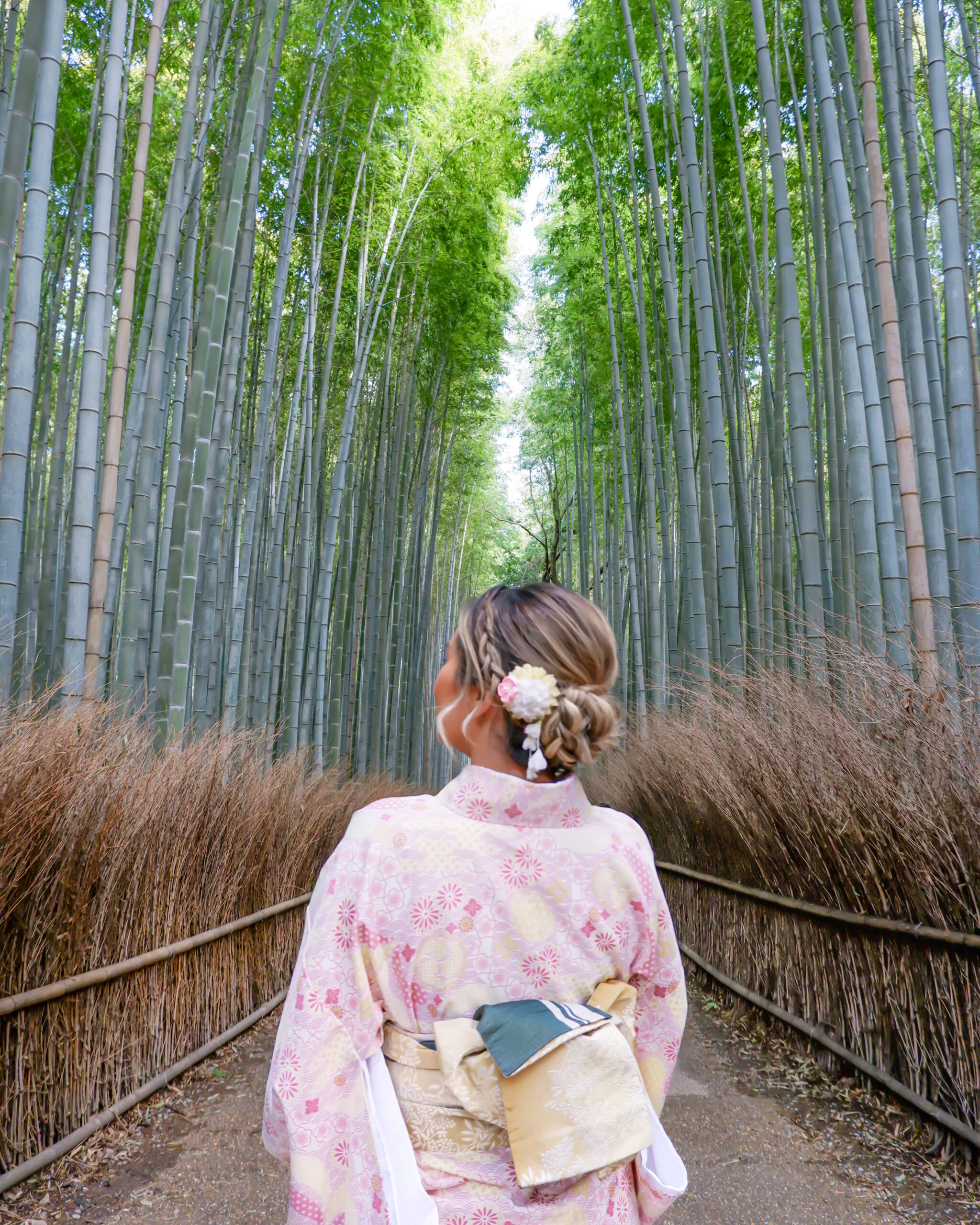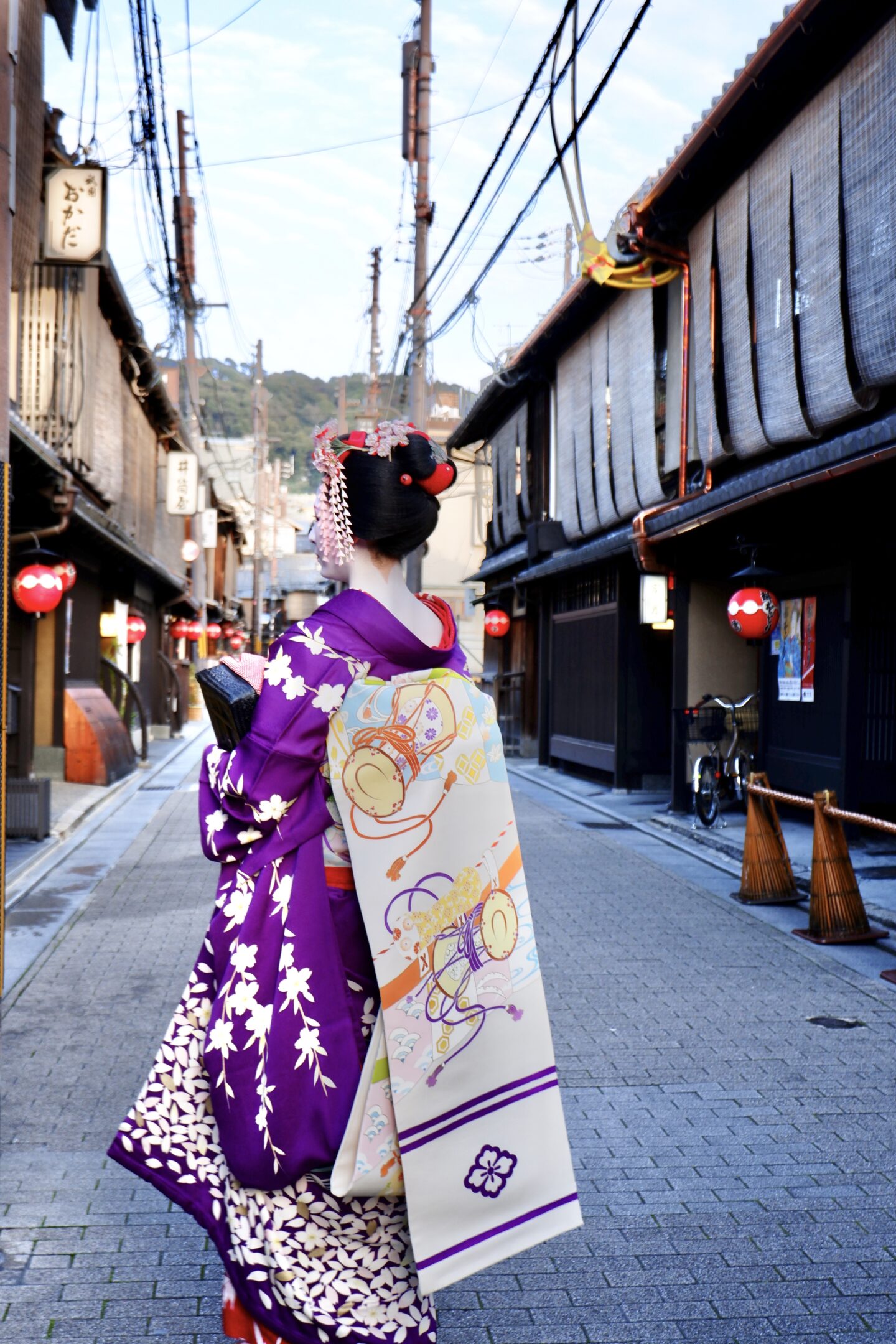Kyoto is a must if you’re travelling to Japan! You will find yourself in awe of the temples, beautiful zen gardens and colourful Shinto shrines. The city is home to more than 1,600 temples, perfectly preserved through the centuries with landscaped gardens, that bloom with Japan’s famed cherry blossoms in the springtime.
Exploring by foot is easy in Kyoto, I loved walking from temple to temple, indulging in the amazing cuisine and wandering through the bamboo forest in a kimono. I’d recommend at least 4 days to really get a sense of this wonderful former capital city of Japan.
Kinkaku-ji (Golden Pavilion)
This Zen temple north of the city is covered in gold leaf, giving it the name Golden Pavilion. The gold reflects off the water of the surrounding pond, almost blinding you but such a beautiful sight. I recommend visiting just before closing time for fewer people. Admission ¥400
Arashiyama Bamboo Grove
There’s no doubt you’ve probably seen many photos of the Arashiyama Bamboo Grove on Instagram. Accessible directly from the main street of Arashiyama, it’s one of Kyoto’s top sights. Easily navigatable, there’s just one main path through the grove, lined with endless rows of towering bamboo.
It’s open 24 hours a day so if you’re looking to get that gram-worthy shot with no people in it, go at sunrise or do what I did and just angle yourself directly in front of the camera to hide the people.

Okochi-Sanso Villa
Just right of the end of the bamboo grove path, you’ll find Ōkōchi Sansō, the former estate of the Japanese jidaigeki actor Denjirō Ōkōchi. It took him some 30 years to create the gardens and villa you see today. Admission ¥1000 includes a Japanese sweet and matcha tea in their teahouse.
Fushimi Inari-Taisha
There are over 5000 orange torii gates that wind through the hills behind Fushimi Inari-Taisha. The shrine is dedicated to Inari, the god of rice, sake & prosperity.
Each torii gate has been donated by an individual or business in the hopes of receiving good luck and fortune. The name of the donor is inscribed on the back of each gate. Admission is free.
Kiyomizu-dera
This popular Buddhist temple dates back to 778AD, best known for its wooden stage complex with sweeping views over the city. It’s made up of 168 (Japanese Zelkova) pillars, crafted from thick, centuries-old trees without using a single nail. Admission ¥400
Nara
Nara is best known for its wild deer who roam freely in the parks, the Japanese consider them messengers of the gods. Dotted around the park are stalls selling deer crackers which you can feed to them by hand. Be careful the older deer are quite persistent/aggressive and bite you.
There are so many more places, the list could go on forever. Safe to say I’ll probably visit again one day soon. If you’re in need of places to eat, check out my Kyoto Food Guide.





















